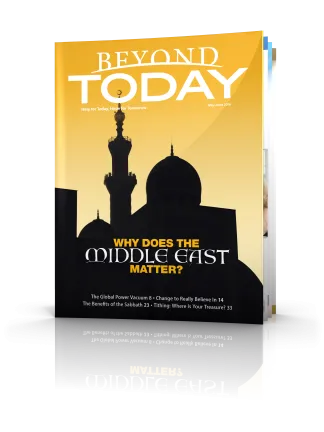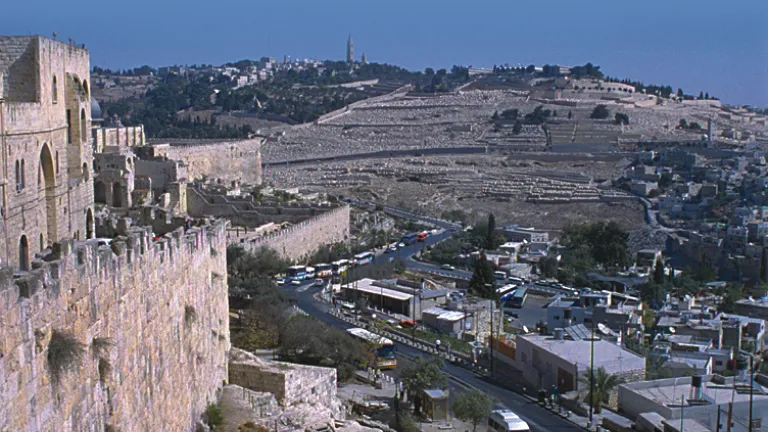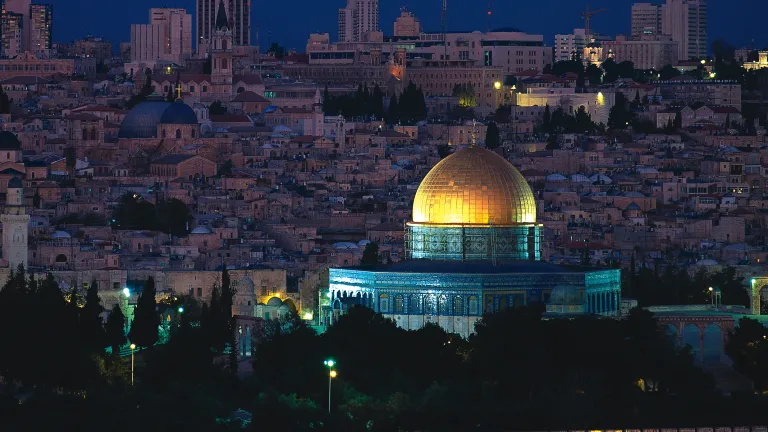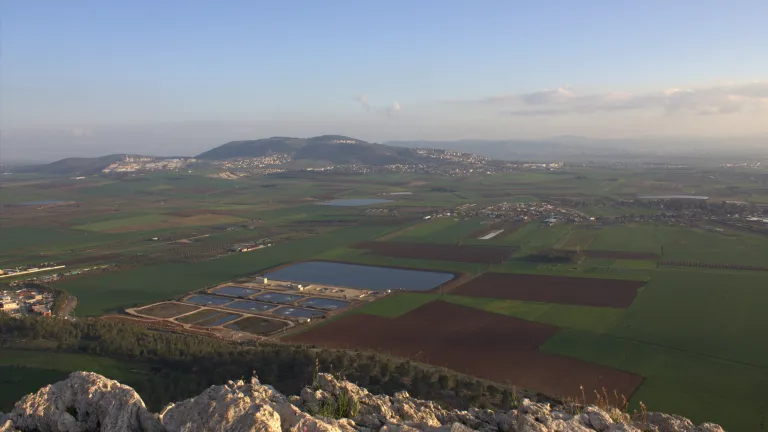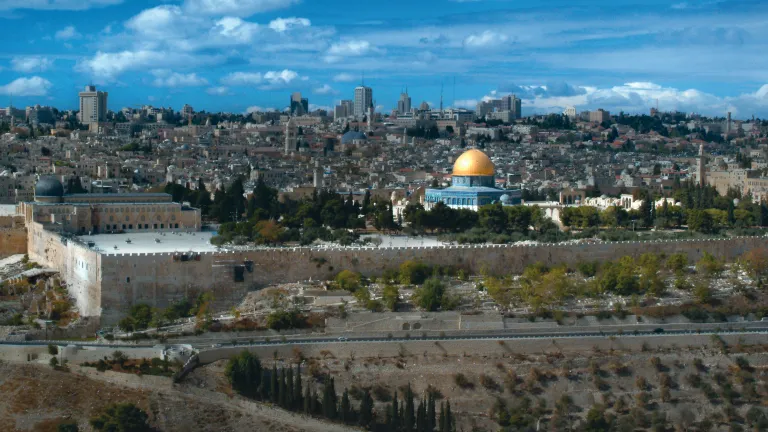The Center of the World
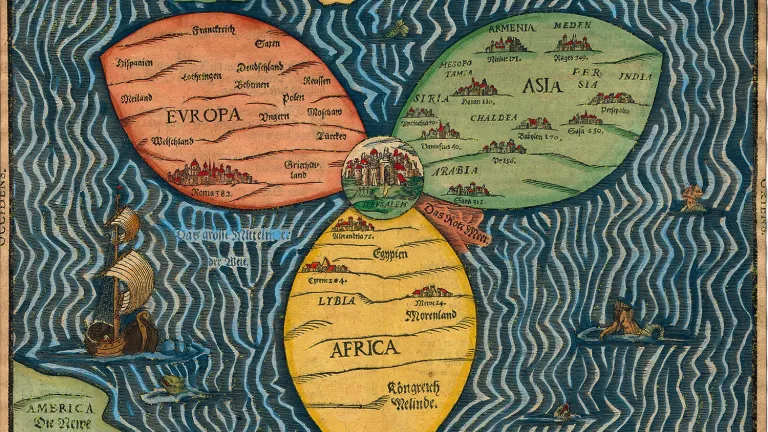
Jerusalem, the center of conflict, is destined to fulfill its destiny as the center of peace for the world!
Heinrich Bünting (1545-1606) was a German pastor, theologian and maker of maps. He’s best known for a book of maps of the Holy Land first published in 1581. It was a bestseller of his day, reprinted multiple times and translated into several languages.
Among the maps in the book was a highly stylized and curious one designed to make a theological point. We’ve reproduced it here. His point was that the Holy Land—and Jerusalem in particular—is the center of the world.
In his map Jerusalem sits where the three continents of Europe, Asia and Africa meet. While not literally true, it was figuratively true because the ancient trade routes—and invasion routes—between those three continents ran right through the Holy Land. With the Mediterranean Sea on one side and the great Arabian desert on the other, there was no other option.
This made the Holy Land the crossroads of the ancient world—which is a primary reason we see so many wars and battles mentioned in Scripture. But God didn’t intend it to be this way. He placed His chosen nation Israel in this spot for a very different reason—not to show the way to war, but the way to peace.
After generations of slavery in Egypt, God brought Israel out and led them to the Promised Land. As they prepared to enter, God through Moses recounted the miracles He had performed and the laws He had given to help them create a new kind of society—a society built on the foundation of God’s laws.
Notice what God intended for His people Israel, as revealed through Moses: “See, I have taught you decrees and laws as the Lord my God commanded me, so that you may follow them in the land you are entering to take possession of it. Observe them carefully, for this will show your wisdom and understanding to the nations, who will hear about all these decrees and say, ‘Surely this great nation is a wise and understanding people’” (Deuteronomy 4:5-6, New International Version 1984 throughout).
God placed Israel in this spot, at the crossroads of the world, to be an example to the nations around it, as well as those who would pass through along those ancient trade routes through the area. Israel was to be a living example of how blessed a nation would be if it obeyed God’s laws.
Sadly, this was not to be. Israel rebelled against its Creator and became instead an example of what happens to a nation that turns its back on God. The country was invaded and destroyed, with most of the survivors exiled from the land.
Fast forward 26 centuries to today. This land remains at the center of conflict for the world. And it’s building to a final crescendo with the return of Jesus Christ. Notice what God says: “I will gather all the nations to Jerusalem to fight against it . . . Then the Lord will go out and fight against those nations” (Zechariah 14:2-3).
An all-out war will follow between the armies of man and the invincible spiritual army of God. But it will be no contest. “On that day his feet will stand on the Mount of Olives, east of Jerusalem . . . [And] the Lord will be king over the whole earth” (Zechariah 14:4; Zechariah 14:9).
And then, as Isaiah 2:3-4 tells us: “the law will go out from Zion, the word of the Lord from Jerusalem . . . They will beat their swords into plowshares and their spears into pruning hooks. Nation will not take up sword against nation, nor will they train for war any more.”
Jerusalem, the center of conflict, is destined to fulfill its destiny as the center of peace for the world!
